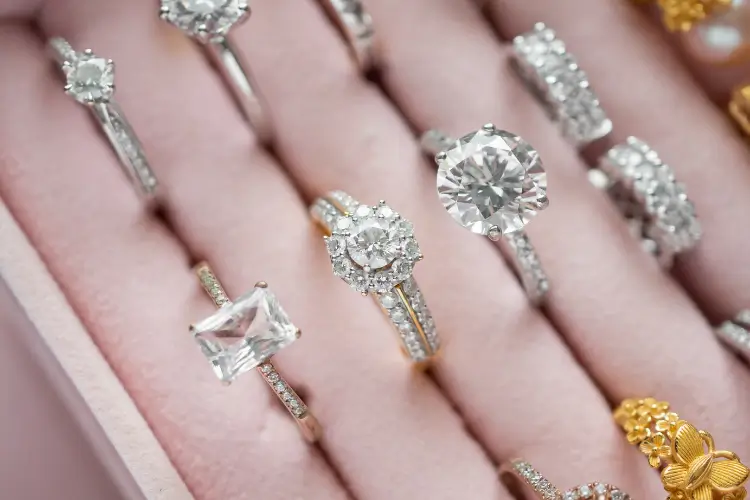Lately, the trend in the jewellery market is for shoppers to reconsider and then choose carefully. The public is becoming increasingly conscious of environmental and social motives behind what they buy—not least when it comes to diamonds. As a result, purchasers are turning toward environmentally friendly choices for their jewellery collections. They are also looking for the label ‘fair trade’ to ensure that those preparing raw materials receive a living wage. The so-called ‘ethical’ (or responsible) gemstones are one of the most radical new advances in the business in terms of the lava hot speed that today’s society requires. These are jewels from the earth’s early past developed in controlled conditions instead of being extracted from the ground.
Understanding the Ethical Gemstone Process
The way ethically sourced gems are sourced becomes a lot different with the development of these gems. Quite often, in contrast to traditional mining, which had been going on for centuries, a gem starts being cultivated in a laboratory. This approach cuts the damage to the environment and communities more than mining gems. One of the significant benefits of this way of doing things is that it eliminates the need for mining in scarred ways that fetch habitat destruction, water contamination, and even human rights abuses.
In a laboratory, the cultivation process re-creates natural conditions under which gemstones are born in the earth. For example, it is possible to produce diamonds using procedures known as ‘High Pressure High Temperature’ (HPHT) and ‘Chemical Vapour Deposition.’ Whether a gem is mined in a factory or is mined with axes and mule hires at great risk to life high up in remote mountain outposts, these methods replicate the years of lapidary craft that jewellers have put into their performance so that when production is finally finished, a gem has every physical, chemical, and optical property.
Ethical Considerations in Jewellery Choices
People are increasingly asking where the material for their jewellery comes from. Traditional gemstone mining has long been connected with environmental destruction and heinous labour practices, leading to strict standards for transparent and ethical procurement.
For example, the Kimberley Process Certification Scheme was established to halt trading in conflict diamonds. This scheme has effectively curbed the trade of blood diamonds. Still, it leaves considerable room for ethical concern regarding working conditions, environmental impact, and the overall sustainability of mining operations. As an alternative, growing gems in laboratory settings could be one way to get beyond these hurdles. It is an exciting development with clear implications for anyone who wants to invest in luxury jewellery without involving all these concerns.
The Role of Technology in Ethical Gemstone Production
The technology necessary to create such stones is available since it has enabled ethical gems to be produced as an alternative to naturally occurring gemstones extracted from the earth. Lab innovations grown diamond manufacturing now mean that stone varieties that barely differ from what miners have produced can be created. The precision involved in the laboratory-based growth process ensures that each gem is of the highest quality and quiet without blemishes, so it is not merely an ethical possibility, but it looks nice.
Besides, controlling the conditions in which stones form brings a consistency that isn’t easy with natural minerals—even those from a mine. For designers, this consistency gives a much wider range of good-quality stones to work with, and it also cuts down on the need for further treatments or additions often necessary in the case of pure mineral gemstones. This means that jewellery made from these stones is often tougher and has a better long-term value.
Environmental and Social Impacts of Ethical Gemstones
The environmental benefits of choosing ethically sourced gemstones are significant. Lab grown diamonds consume less energy, use fewer natural resources, and do not contribute to ecosystem destruction. In contrast to traditional mining, which often leads to deforestation and soil erosion, lab-grown gemstone production occurs in a controlled environment that minimises waste and energy consumption.
In the social sphere, ethically mined gemstones provide a fair option. The labour conditions in producing lab-grown gems are strictly regulated, promoting fair wages, safe working conditions, and basic human rights protections for all concerned. This contrasts sharply with the often exploitative labour practices in mined gems, where workers may labour under dangerous conditions without any oversight or regulation.
How to Choose Ethical Jewellery
It is significant to search for pieces of jewellery that indicate how much their production methods harm people or the environment. Today, many goldsmiths advertise where they obtain their precious stones and how they fashion them. This is an aspect of particular concern to those consumers who insist on ensuring that their purchases adequately reflect not merely durability but also the gilding of conscience itself.
When looking for sustainable jewellery, certification or accreditation of gemstones is one crucial consideration. For example, certain trademarks or certifications, such as Fairmined and Fair Trade, guarantee gems are produced in a socially responsible and environmentally friendly manner. Now, many jewellers also provide explicit details on the sustainable practices they use in making their products, from sourcing raw materials to producing the final cut pieces that fill your collection.
Conclusion
Nature-endowed gemstones may become this era’s biggest loser as consumer love for eco-friendly and sustainable products surges. Lab grown ones are a clear example of not casting tradition to the winds but embracing change responsibly. By choosing jewellery made with mind and mindfulness, consumers are not just investing in fancy pieces but helping the whole jewellery industry move toward a more ethical, sustainable future. Whatever the application, whether it’s a breathtaking engagement ring or something you wear around your neck to show off some distinct style, ethical gemstones let you wear these proudly now and later!




